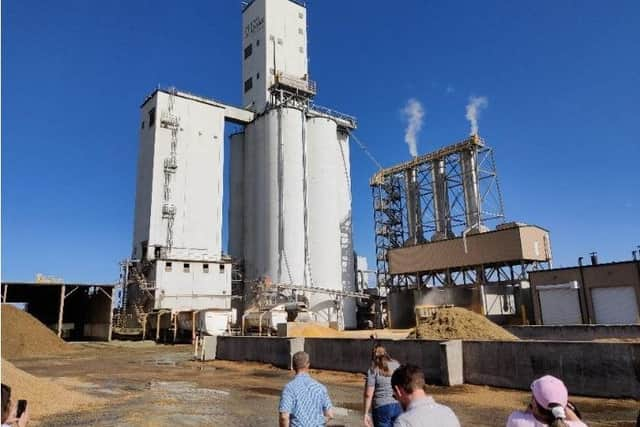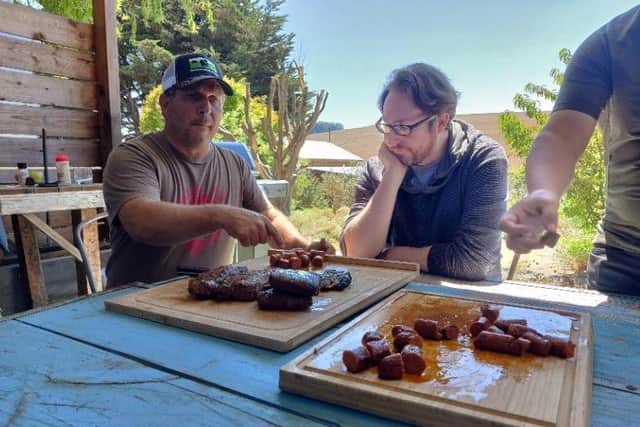Kilkeel beef farmer shares his experience as a Nuffield Scholar
and live on Freeview channel 276
Being a Nuffield Farming Scholar has given me opportunities to see the world and meet people enthusiastic about developing a positive future for agriculture. So far, the scholarship has allowed me to travel to Australia and the United States, with further plans to travel in Europe this year before presenting my findings at the Nuffield conference this November.
When applying for my scholarship in 2019, livestock farming seemed to be making headlines everyday with the Eat Lancet report calling for us to adopt plant-based diets for our health and environmental good. Extinction Rebellion was warning of the climate crisis and livestock being a major contributor. We also saw the rise of alternative protein companies such as Beyond Meats and Impossible Foods bring their products to market, claiming to have products that would taste like meat without having the guilt of eating animal products.
Advertisement
Advertisement
In my topic I wanted to explore the strengths and weaknesses of alternative proteins and find ways to ensure our animal products stayed on the table.


The world has changed a lot since then, however, with my trip to Australia being cut short and my trip to New Zealand cancelled due to the Covid 19 pandemic. We have since seen a growth in meat product markets and a fall in share prices of alternative protein companies causing me to change my focus to how we, as a red meat industry, can meet the changing demands of consumers.
Through my study I have found that consumers’ major concerns around meat products are cost, health, environmental impact, animal welfare and taste.
In August 2022 I travelled to the United States with visits to ranches, feedlots, bull studs, universities, butchers and industry representatives to better understand the US beef industry and what the UK could learn from them.
Advertisement
Advertisement
The US industry is focused on efficiency and meat eating quality with premiums being paid to producers for marbling and meat tenderness over carcass yield, which has helped the industry to grow and continue to have a high domestic and international demand.


I visited the Five Rivers Kuner feedlot which held 100,000 head of cattle near Greeley, Colorado. Five Rivers are the largest cattle feeders in the world, finishing almost 2,000,000 head per year in 13 feed yards.
They have a focus on efficiency and animal welfare. The yard was an impressive 400 acres with animals given 15m2 per animal in pens of 300.
All feed was processed on site with high grain diets with over 1,100t fed daily and 60 trucks delivering feed five days per week. Sixty-five per cent of the animals in this yard were reared under the Aspen “Never ever” brand which meant the animals were never given antibiotics or growth promoters, these animals averaged 1.27kg DLWG compared to the standard cattle at 1.6kg DLWG. The Aspen animals were also lighter and had 20 more days on feed.
Advertisement
Advertisement
The welfare on the site was excellent with pen riders going through the pens twice daily and moving any animals that need attention to hospital pens were an onsite vet will treat them and feed back the information to the pen rider.
There is also a growing demand for grass fed beef with a growing number of ranchers producing beef direct to the consumer. This beef is not graded through the normal USDA meat grid as there is less marbling associated, however, as the US consumer values high marbling, many of the ranchers are introducing Wagyu genetics to improve the eating quality.
Loren Poncia of Stemple Creek Ranch in Tomales California was one ranch that reinvented itself and grew the business by producing high quality grass fed beef. In 2009 the ranch sold 10 cattle direct to market and in 2021 sold 2,000 head direct to market.
The ranch has its challenges with low rainfall levels and having to build forage for the dry periods of the year.
Advertisement
Advertisement
This was done through tall grass grazing, pre mown hay left in place and feeding alfalfa hay. They have also been direct drilling more drought tolerant species such as chicory and plantain.
The US beef industry has a lot we could learn from.
One take home message was relayed to me during a visit to the Midwest with large grain producers and beef feedlots: “Beef is a great way to add value to grain.”
Instead of exporting a lower value grain product they could put it through an animal to increase the export value.
Is our strength adding value to grass by producing beef?
I still have more questions to be answered for my topic, in particular how we can improve animal welfare in beef production and I will be traveling in Europe later this year to investigate this.
Advertisement
Advertisement
I would highly recommend anyone to consider a Nuffield Farming Scholarship as it allows you to meet people passionate about agriculture, see parts of the world you would never see and bring ideas back to your business and the industry.
I would like to take this opportunity to thank both the Nuffield Farming Scholarship and the Thomas Henry Foundation for their support.